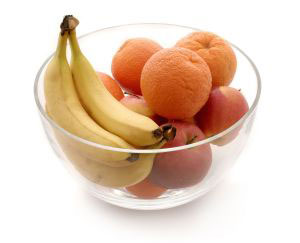 Research shows that more than 50 percent of New Year’s resolutions, most of which have to do with diet or nutrition, don’t last beyond January. Two leading nutritionists aim to reverse that trend by encouraging people to focus on one realistic and attainable resolution: eat more fruit.
Research shows that more than 50 percent of New Year’s resolutions, most of which have to do with diet or nutrition, don’t last beyond January. Two leading nutritionists aim to reverse that trend by encouraging people to focus on one realistic and attainable resolution: eat more fruit.
According to Stephanie Clarke and Willow Jarosh, licensed nutritionists, registered dietitians, and co-founders of C&J Nutrition, fruit is an essential part of a healthy diet because it contains large amounts of naturally occurring key nutrients like vitamins A and C, potassium, fiber, and phytonutrients – all key players in disease prevention. “Vitamin C is a powerful antioxidant that’s important for growth and repair of all body tissues. Potassium can help maintain healthy muscle and nerve function and lower blood pressure, and fiber is woefully amiss in most American diets,” said Jarosh.
“We’ve found that when people commit to eating the recommended one and a half to two cups of fruit per day, their overall diets improve. Fruit is ideal, too, because it’s filling, flavorful, and satisfying—easily becoming a regular part of meals and snacks,” said Clarke.
Clarke’s and Jarosh’s provided Diets In Review readers with a few tips to help you eat more fruit daily:
Substitute fresh fruit for jams and jellies: Instead of a classic PB&J, make it a PB&F – layer slices of apples, banana, pear, apricots, mango or strawberries.
Consider freeze-dried fruit: Not to be confused with dried fruit, which is higher in sugar and contain additives, freeze-dried fruit offers a convenient and portable way to get fruit servings while satisfying a craving for something sweet and crunchy.
Mix it in: Customize trail mix using freeze-dried fruit, whole grain cereal, nuts and seeds – or toss onto a salad for a creative and wholesome topping. Add fresh or freeze-dried fruit to plain versions of foods like yogurt, whole grain frozen waffles, or plain oatmeal.
